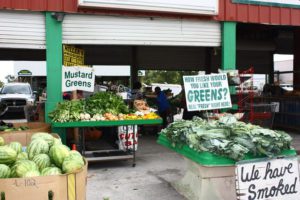

Jan 6, 2023How to increase sales of seasonal products
Let’s say it’s early June, and markets are revving up. The top items I’m looking for at a market are strawberries, asparagus, snow peas and salad greens.
As a former market manager, I knew how much these items would draw customers to our market, but I didn’t want to see these items left over at the end of the market day.
There is no way I want to see my produce farmers having to take those delicate items back home, and they don’t want to either. We know it is a tricky balance of having enough product and not too much.
Ideally, we want to sell out somewhere in the last hour of the market, and aligning the stars to make that happen is a challenge. Weather is a significant factor in the success of our market days, so let’s focus on things we can control.
If you are seeing your seasonal items left over at the end of the market day, you need to examine what you can do to help increase sales.
Traffic flow – Observe how customers move through your market. How are they engaging (if at all) with the vendors? How much product are they purchasing?
When was the last time we did a rapid market assessment, including a dot survey of our customers? Do we need to make any layout or display changes to gain more customer attention?
Realizing that vendors at a market can change every year, we need to look at the current lineup and see if it makes sense to the flow of the market. Who are our “anchor” vendors, and are they strategically placed to draw people through the market?


Display/signage – Shoppers are seeing these seasonal items everywhere, so we need to tell them why they should purchase them here at our market. Colorful signs with bullet points highlighting the taste and nutritional features. “First of the season!” “Freshly picked.” “Our own.” Is the produce a variety that may have a particular feature? “Super Sweet.” “Good for baking.”
Vertical signage at the market can grab a customer’s attention and tell customers what is available this week. Always freshen the display to keep that look of abundance. If possible, encourage your vendors to offer samples.
Specials – We like to get a premium price for our produce if we have excellent quality and are early in the season, but it won’t matter what the price is if we take it home at the end of the day. Rather than lowering our price, perhaps we can offer a “two for” price. Recently, a market manager I spoke with told me that a vendor was selling strawberries for $6 a quart, but they were not selling them all and taking quarts home. She suggested they offer “$6 per quart or 2 for $10.”
Social media and newsletters – When using social media, stick to promoting the top seasonal staple items that will be at the market that week. Staple items such as bread, eggs, dairy, and seasonal produce are what makes for repeat customers.
This will also highlight the freshness of the products at the market. Research has shown that the top things customers look for in produce is quality and freshness. Price ranks somewhere around number 3 or 4 in their purchase priorities.
Post on days leading up to the market day rather than the day of the market. If I see your post on market day, I may have made other plans for the day, but if I see it earlier in the week, I can make plans to be there.
–Brian Moyer, Penn State Extension














